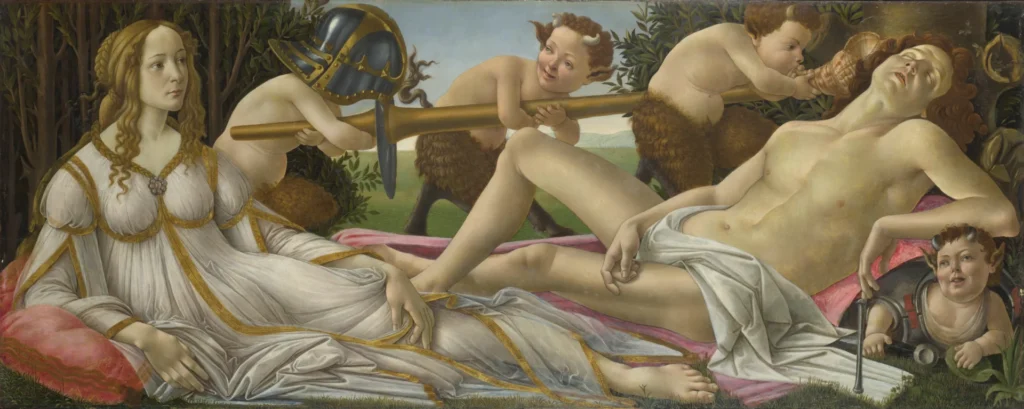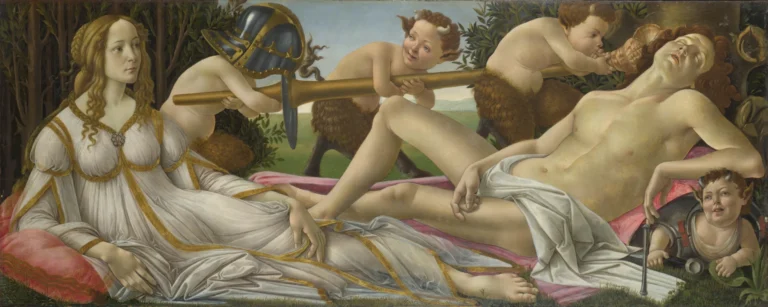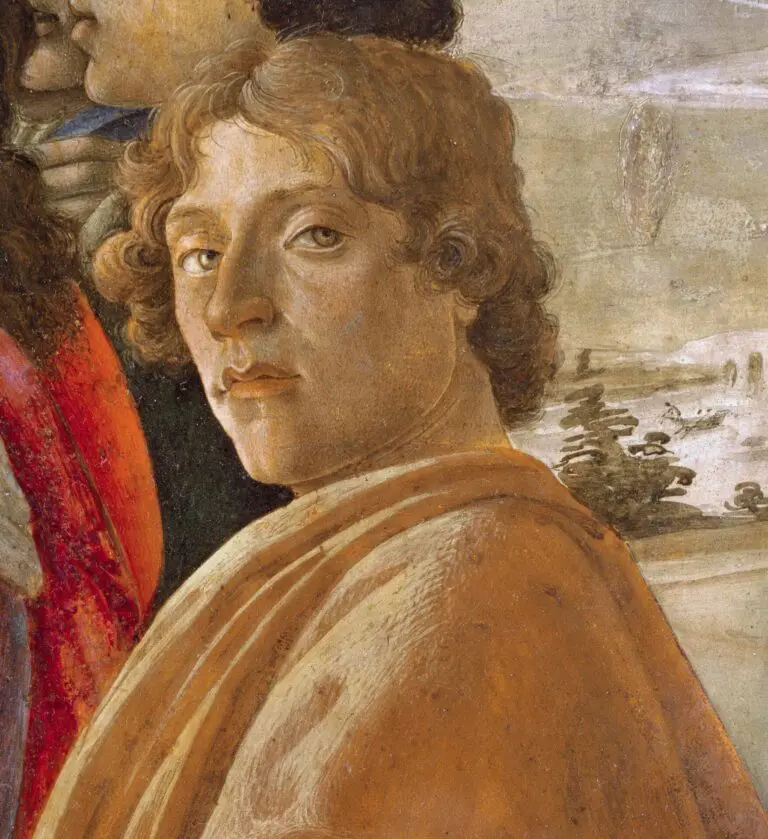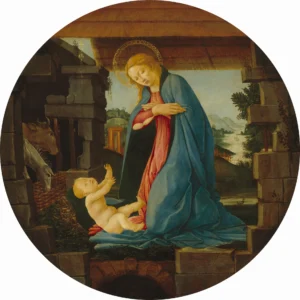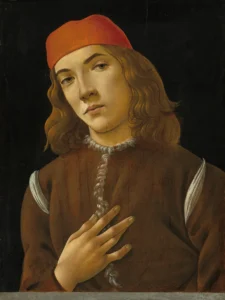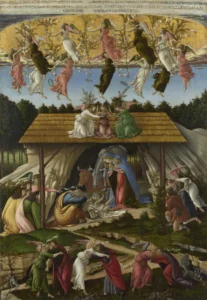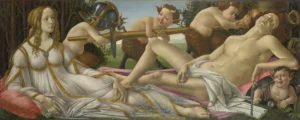Venus and Mars (1485)
"Venus and Mars" showcases the Roman gods in a serene forest grove, with Venus alert and active, while Mars lies asleep, symbolizing love's dominion over war. With playful satyrs interacting with Mars's armor, the painting emphasizes its themes of humor and love. The choice of setting and symbolic elements, such as the swarm of wasps, enhances its rich narrative, while Botticelli's use of traditional and new artistic techniques makes it a masterful representation of the Early Renaissance period.
Around 1485
About the Artwork
This remarkable artwork was likely commissioned to celebrate a marriage, serving as a decorative panel in the bedroom of the newlyweds. The backdrop of a forest grove, possibly linked to myrtle or laurel—plants associated with Venus and marriage—adds depth to the narrative. The figures of Venus and Mars, embodying contrasting ideals, highlight Botticelli's mastery in merging mythological themes with personal celebration. With the intricate playing of satyrs and the clever symbolism of wasps and the conch shell, the painting tells a timeless tale of love's playful triumph over the chaos of war.
Did You Know
Liked what you see? Add it to your collection.
Enjoyed reading? Share it.
... continued
Subject Matter and Setting
The painting depicts the Roman gods Venus, the goddess of love, and Mars, the god of war, in a mythological scene. Venus is awake and alert, while Mars is deeply asleep. The scene is set in a forest grove, possibly of myrtle or laurel, which are plants associated with Venus and marriage, or with Lorenzo de' Medici, respectively.
Symbolism and Interpretation
The painting is rich in symbolism. The dominant theme is the idea that "love conquers war," as evidenced by Venus's wakefulness and Mars's deep sleep. This theme was common in Renaissance thinking and aligns with Neoplatonic ideas. The satyrs playing with Mars's armor and the conch shell blown into his ear add a humorous and playful element, highlighting the power of love to render even the god of war helpless.
Artistic Details
- The painting features four infant satyrs playing with Mars's armor, including his helmet, lance, and breastplate. One satyr blows a conch shell into Mars's ear, symbolizing Venus's birth from the sea and the sexual connotations of the scene.
- Mars is depicted as a muscular, classical nude, similar to ancient sculptures, while Venus is clothed, reflecting contemporary ideals of female beauty and possibly emphasizing her chastity despite her infidelity.
- A swarm of wasps around Mars's head could symbolize the pain associated with love or, alternatively, represent the Vespucci family, who might have commissioned the painting, as their coat of arms featured wasps.
Commission and Purpose
The painting was likely commissioned to celebrate a marriage. Its wide format and close view of the figures suggest it was intended to be set into panelling or furniture, such as a spalliera, to adorn the bedroom of the newlywed couple. This type of panel was part of the furnishing in the semi-public reception room known as a camera.
Artistic Techniques
Botticelli employed a mix of traditional and new techniques. The figures are outlined in thick black lines, a traditional Florentine method, while he also used newer techniques such as aerial perspective and foreshortening. The painting is executed in tempera and oil on a poplar panel.
Current Location
The "Venus and Mars" painting is housed at the National Gallery in London, UK, where it was acquired in 1874.




